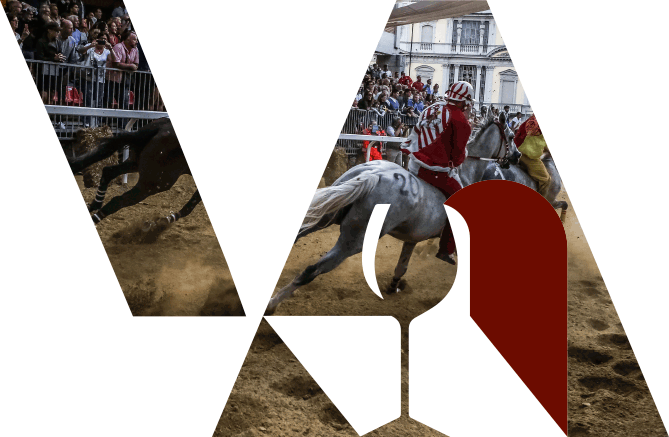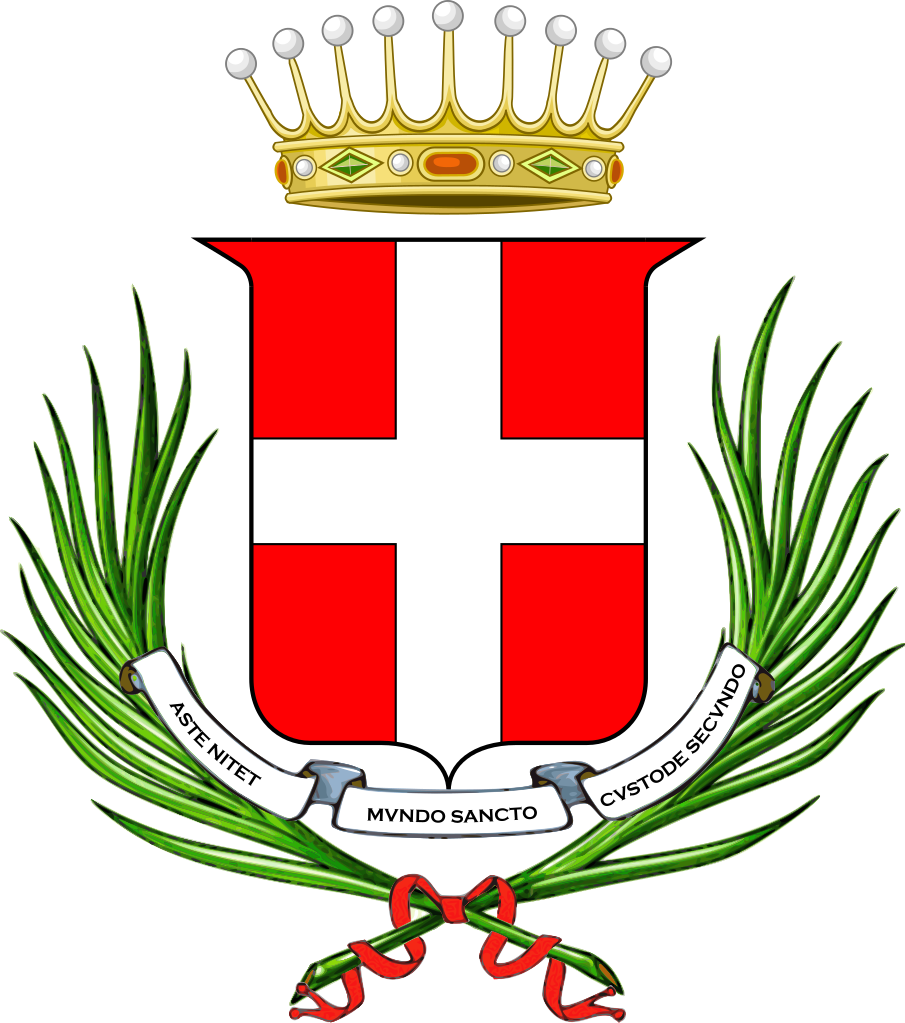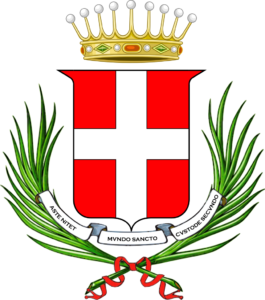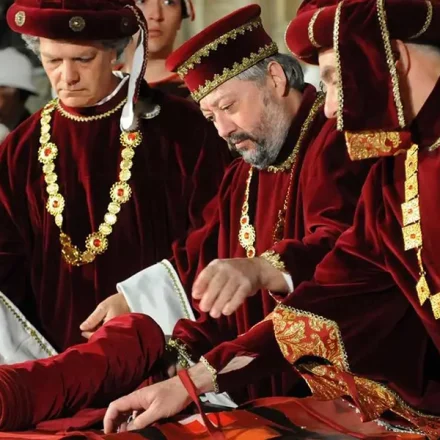
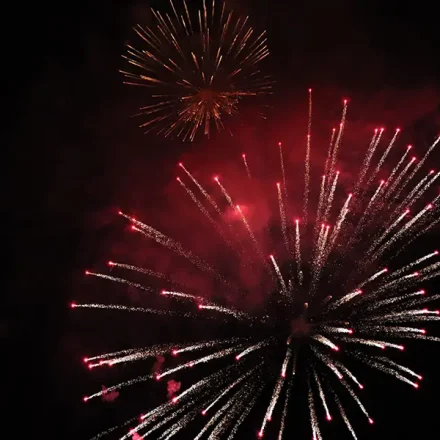
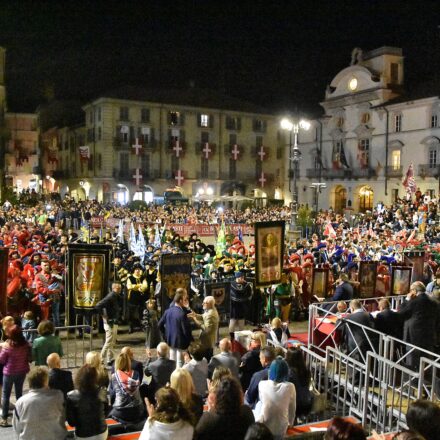
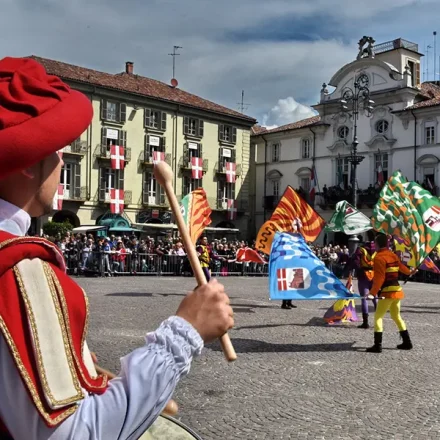
The Rites of May
The Palio year begins with the Patronal Festivals.
On Saturday night, after a sumptuous historical procession, the ceremony of the Appraisal (Stima) takes place according to the ancient rites: At the disposal of the Mayor, three expert drape merchants verify that the drapes of the Palio, one for the winner of the race and the other for the Church of the Patron Saint, “…are as good and of the same size and quality as usual…”.
The Palio is the work, every year, of a master of contemporary art. At the end, we have the Oath of the Rectors of each district, hamlet, and municipality and, finally, the most expected moment: The Mayor, to the jubilation of an entire city, solemnly announces the Palio that will be held in September.
On Monday evening, the fireworks. On the day of Saint Secundus, the first Tuesday of May, the offer of the drape in homage to the patron saint. The distribution of the Soup of the Poor follows. Finally, on Wednesday, the traditional fair: Over three hundred mercatores with their stalls color the historic center of Asti.
The Palio of Flag Wavers
In Asti, the groups of musicians and flag-wavers, representing the twenty-one districts, hamlets, and municipalities participating in the Palio, compete in a vibrant and exciting tournament called Palio degli Sbandieratori (Palio of the Wavers).
In the heart of the city, on the square facing the Collegiate Church of Saint Secundus, under the watchful eye of the judges of the Italian Flag-waving Federation, the teams perform difficult and extraordinary evolutions.
Spectacular choreography and fast-paced rhythms in a flash of festive and colorful flags: A race, which precedes the Palio and anticipates its emotions between the blare of trumpets and the roll of drums.
To the winners, a drape similar to the Palio for the race, but of reduced dimensions, for this reason the event is called Paliotto.
THE PROGRAM
Saturday, May 3
9:30 PM – From Piazza Cattedrale to Piazza San Secondo
NIGHT PARADE
10:00 PM – Piazza San Secondo
OATH AND EVALUATION OF THE PALIO
In case of bad weather, the Oath and Evaluation ceremonies will take place at Teatro Alfieri at 9:15 PM,
and the night parade will not take place.
Sunday, May 4
3:00 PM – Piazza San Secondo
SBANDIERATA DEL SANTO
Performance by young flag wavers and musicians.
An initiative by the Collegio dei Rettori, preceded by a parade of musicians and flag wavers
departing from Piazza Roma at 2:30 PM.
In case of bad weather, the Sbandierata del Santo will take place on Tuesday, May 6, at 6:00 PM.
Monday, May 5
9:15 PM – Parco Lungotanaro
FIREWORK SHOW IN HONOR OF THE SAINT (POSTPONED TO THE 12TH)
Tuesday, May 6 – Patron Saint’s Day
Piazza San Secondo
PATRON SAINT’S CELEBRATION
- 10:45 AM – Performance by the ASTA flag wavers
- 11:20 AM – Entrance to the Collegiate Church
- 12:15 PM – Conclusion of the Ceremony
- 12:30 PM – Distribution of the “soup of the poor”
- 4:00 PM – Pony…in Palio: an initiative for children, organized by the Collegio dei Rettori
5:00 PM – Parco della Resistenza
Concert (In case of bad weather, the concert will be canceled.)
Wednesday, May 7
From dawn to dusk – Historic Center
CAROLINGIAN FAIR
Saturday, May 10
8:30 PM – Piazza Alfieri
CONFERRAL OF THE ORDER OF SAN SECONDO
Followed by:
PALIO OF THE FLAG WAVERS
The initiative is preceded by a parade of musicians and flag wavers
departing from Piazza Roma at 8:00 PM.
In case of bad weather, the Palio of the Flag Wavers will take place on Sunday, May 11, at 11:00 AM.
If bad weather persists on Sunday, the competition will be held at PalaBrumar San Quirico.
September
in Asti
